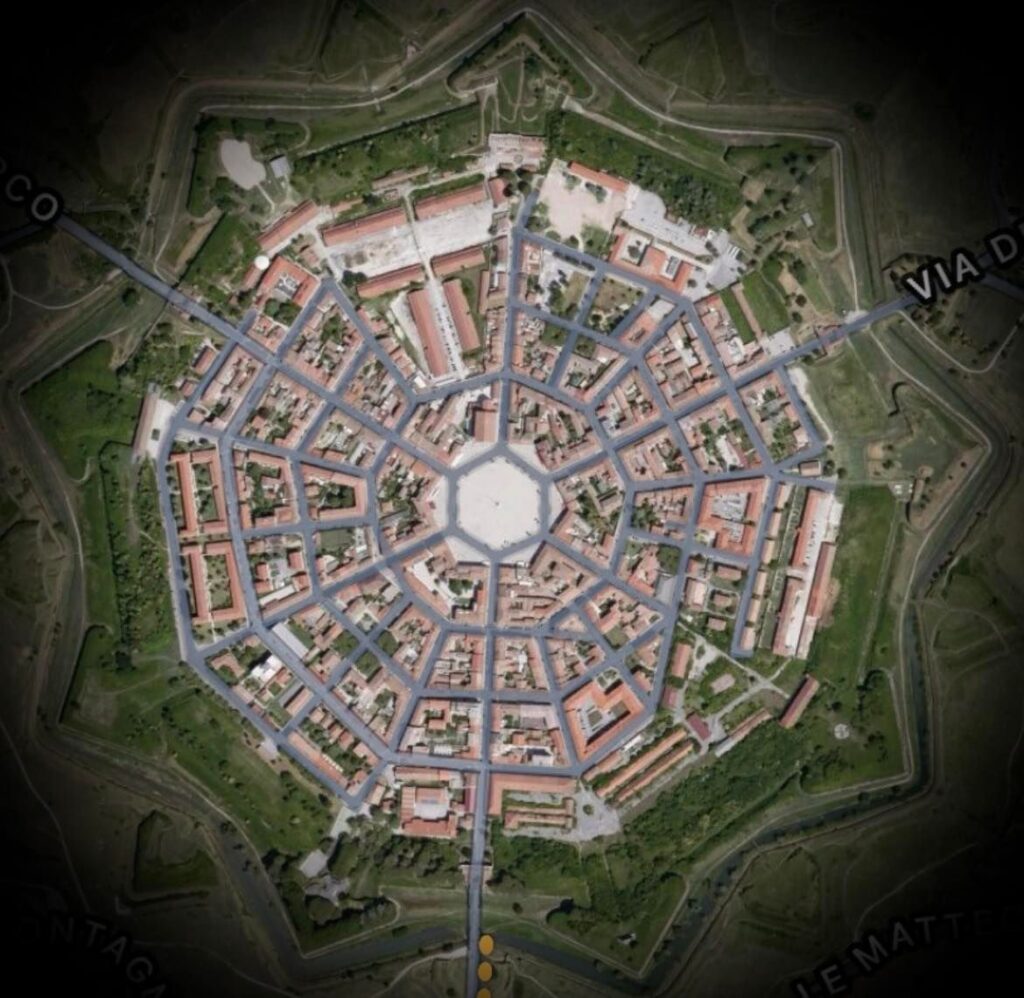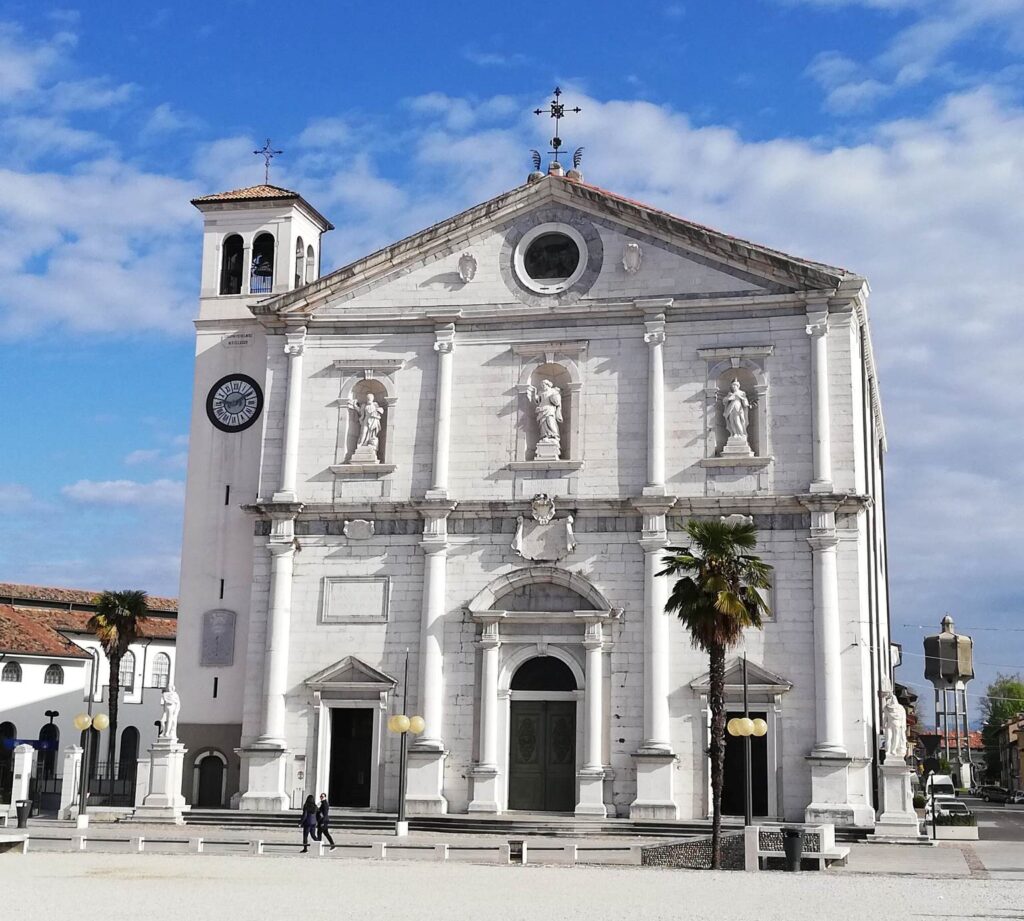Palmanova- the perfect city
The History
Palmanova, also known as the fortress city and the ideal city, is located in the province of Udine, Italy. It was designed on the plan of a perfect ideal nine-pointed star (such a city plan provided excellent defence) by the Italian architect Vincenzo Scamozzi in the 16th century. It was built in response to the strategic and defensive needs of the Venetian Republic to protect the eastern border from the Ottoman Empire.
Palmanova acted as a strategic point of defence until the end of the 18th century, when the wars with the Ottoman Empire ended, the eastern border became less valued. In the 19th century, the town passed into Austrian hands and was, used as a military garrison.


Why is it the so called perfect city
The concept of the ideal city was born during the Renaissance. In the ideal city, the symmetry of the streets was sought and their width influenced, among other things, the size of the squares. It had to be equaly functional and beautiful, and this is exactly what the Italian city of Palmanova is.
In the centre of the town is the main hexagonal square, Piazza Grande, around which the town’s most important buildings, namely the town hall and the cathedral, are located. Six symmetrical streets diverge from the square, three of which lead to the city gates.
The cathedral
One of the most important buildings in Piazza Grande right next to the Town Hall is the Cathedral, or Church of the Most Holy Redeemer, which is dedicated to the Most Holy Redeemer, Saint Justina and Saint Mark. It was built in the 17th century and follows the Venetian architectural style. The design of the cathedral is attributed to Vincenzo Scammozi, the architect who designed the city of Palmanova.
During the day, the cathedral is open to the public and you can see the beautiful frescoes and the statue of Saint Justina inside.
